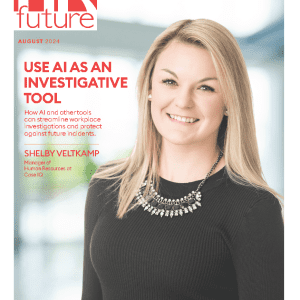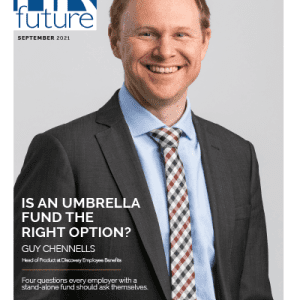Correctly managed, rewards can be a leverage tool rather than a tension point.
The purpose of reward hasn’t changed: to attract and retain talented people and to incentivise and drive performance. However, changing workforce demographics, critical shortages of skilled employees and the growing mobility and assertiveness of well-informed employees and candidates – despite a depressed economy – is forcing organisations to fundamentally rethink their approach to rewards.
Bersin by Deloitte conducted a High Impact Reward research project across 1 200 organisations globally. The overwhelming outcome of the research was that organisations are battling with redefining their rewards offering in such a way that is aligned to the modern employee/employer relationship. They asked employees in these organisations on a scale of one to ten, “How likely are you to recommend working in your organisation to a friend based on your organisation’s rewards package?” to determine a Net Promoter Score1 (NPS). The outcome was a dismal negative 15!
A key question C-Suite leaders have to ask themselves is: “How do we build on the current Total Rewards foundation to offer workers a more personalised, flexible, customised experience differentiated by employee preferences and their expectations of the organisations for which they work within the means of what we can afford?”. This forces organisations to think about their employees as customers, which in turn raises the question as to how we create a “Total Relationship” with our customer.
Creating a Total Relationship will require employers to move away from a one-size-fits-all approach. Instead, leadership will have to make a concerted effort to drive a culture of rewards, differentiated based on what workers are expecting from the organisation to whom they provide services.
Market disrupters
Decades ago, rewards were as simple as a weekly or monthly salary and a pension commitment. Rewards have since expanded considerably, and firms are struggling to move in line with these trends and get the most out of their offering. Some of the most noteworthy and disrupting changes include employees selecting the relationship they want with a firm based on the perceived value and trade-offs of the alternatives, including full-time, part-time and other contingent work-based models. There is a shifting focus towards team-based performance achievement, and compensation information is freely shared between colleagues, social networks, friends and family. Rewards are increasingly expected to align with employee wants/needs that create their perspective of relative value through social media. Rewards now require a unique approach, responsive to the future of work and individual needs that are constantly changing.
Navigating and improving the relationship transformation
Our 2019 Human Capital Trends Report for South Africa confirms that the preferences of today’s workforce go beyond traditional rewards. 84% of respondents note that they need to improve their employee reward experience. This improved experience, in turn, has to be set on a firm foundation of compensation and benefits but differentiated by other programmes, including recognition, career development and a holistic approach to wellbeing. Despite this requirement, less than 40% of employees felt that their organisation’s rewards offering accommodated the diverse needs of their full-time employees. This fell to 22% and 12%, respectively, when the needs of part-time and alternative workers were considered.
Respondents noted that the most significant barriers to changing their reward strategy included not understanding what employees value, and concerns around perceived fairness and financial burden.
Traditional surveys that focus on what employees want in terms of reward, yield suboptimal results such as “more of everything or much higher salary and bonus” which is not particularly helpful to the firm in creating a differentiated offering within their financial means. Firms may implement bold new initiatives that, while on the outside appear modern and future-orientated, are still not optimised because employees have not been consulted on whether the change will be truly valued or if there is something else they would appreciate more. In essence, this is more of the same where executives presuppose what their employees want and value.
To understand what their “customers” want, employers should start by establishing what keeps their employees awake at night. This analysis should cover a broad range of issues such as debt, personal safety, job security, illness, the ability to retire and work-life balance. The list will vary based on the individual circumstances of the organisation and its workforce. However, the ultimate objective of the study is to identify the unmet needs of its workforce. Once the unmet needs have been identified by employee segment, the employer can consider what elements of their current reward strategy and value proposition need to be refined or added to meet these unmet needs.
These additional reward and value proposition elements should then be tested to establish employee preferences via a trade-off analysis to understand what each employee segment truly values. The trade-off analysis ensures that “more of everything” outcome is avoided.
Once the trade-off analysis is complete, it is then possible to establish employee preference for different reward strategies and value proposition options and their associated financial implications. This allows for a cost-effective solution that helps ensure management does not presuppose what their workers want.
Our interactions with both large and small organisations across the globe have led to the following observations when firms look to optimise their reward offerings:
- There is a massive disconnect between what “management” think their employees value vs what their employees value. Typically “management” only get it right 30% of the time;
- Conversely, programmes that have been on the “chopping block” or thought to have little value are perceived as differentiators by an employee; and.
- Organisations waste anywhere between 5% and 10% of their total people cost on benefits and reward offerings that employees do not truly value.
The business case is clear. Reward spend is most commonly the largest cost item on any firm’s income statement, and it is also one of the most critical levers a firm can pull to improve performance and profitability. Yet, so often, firms get it wrong. Instead of being a tool to leverage, the reward becomes a tension point between employee and employer with no party feeling completely satisfied on their ultimate return vs their investment. Having a relationship-driven rewards model amplifies the effectiveness of what firms use rewards for – to attract, motivate, incentivise, inspire performance and retain their employees.
The risk is too significant not to do anything.
Reference
1 “Net Promoter Score” (NPS) is based on the perspective that the company’s customers can be divided into three categories—promoters, passives, and detractors. By asking one question, “How likely is it that you would recommend [Company X] to a friend or colleague?” You can track these groups and get a precise measure of your company’s performance through its customers’ eyes. Customers respond on a 0-to-10-point scale and are categorised as follows: “Promoters” (score 9 to 10) are loyal enthusiasts. “Passives” (score 7 to 8) are satisfied, but unenthusiastic customers who are vulnerable to competitive offerings. “Detractors” (score 0 to 6) are unhappy customers who can damage your brand and impede growth through negative word of mouth. To calculate your company’s NPS, take the percentage of customers who are promoters and subtract the percentage who are detractors.
Tyrone Jansen is an Associate Director in Human Capital at Deloitte, www.deloitte.co.za.
Deloitte is partnering with HR Future at the HR Summit at Leaderex on 4 September at the Sandton Convention Centre. This all-day session (10:30 – 17:00) will take a deep dive into HR Strategy for the future. This is a must for all HR Directors/Executives. Register for free for this event at www.leaderex.com using the code HRFSTRATEGY.
























